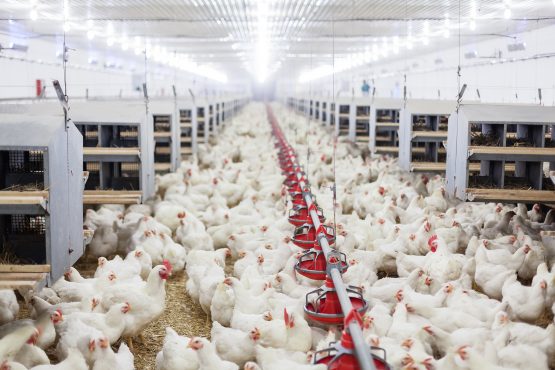The South African poultry industry – the second-largest agricultural sub-sector contributing to the economy – has grown to be a R59 billion industry over the last three years, thanks mainly to additional investments made by the industry’s participants.
At a State of the Poultry Industry Round table on Wednesday, the South African Poultry Association (Sapa) revealed that the industry invested R1.8 billion into growth in 2022 – surpassing initial plans set out in the Poultry Sector Master plan (PSMP) to invest R1.5 billion by the end of last year.
Sapa reports that the industry responsible for producing one of South Africa’s most consumed meat proteins also managed to create 1 900 of the 3 600 new jobs it set out to create between 2019 and 2022, while a further 2 000 new jobs are believed to have been created throughout the value chain during the period.
Industry in distress
Despite notable progress in the past year, the short to medium-term outlooks suggest that the industry is in for tough times, according to Sapa CEO Izaak Breitenbach.
“The challenges that we had were Covid-19: the pandemic had a material impact on this industry. We also had a highly pathogenic avian influenza and we culled three million birds – not our broiler birds, not the slaughter birds, but the birds that we use for breeding.”
“We also had extremely high raw material prices; these prices are at record levels and that impacts the industry negatively,” Breitenbach added.
Load shedding alone is costing poultry producers 75 cents per kilogram of chicken produced, according to Sapa, chipping away at the R29 that producers are believed to be making on average per kilogram sold.
This cost adds to the industry’s already spiralling expenses, fuelled partly by higher feed prices and losses sustained due to the avian flu outbreak.
“If we talk about the medium term and the short term, we see an industry in distress, an industry that’s losing money. We see these record-high raw material prices and chicken prices [as a result] are high,” Breitenbach said.
Output shortages
Another load shedding-related issue costing farmers is the disruption to slaughtering schedules. Because of erratic power outages, farmers are often unable to slaughter birds once they reach the desired maturity.
This has caused a backlog, which results in birds growing older in broilers, meaning that farmers need to spend more than they budgeted on feed.
“That reduced production. The value of the reduced production was 13 million birds during December and January. That is extreme and that is not reflected in the [load shedding cost] number that I have used of 75 cents per kg of chicken produced.”
Price battle
According to Sapa, between the second and third quarters of 2022, the price of chicken giblets, whole fresh chickens and frozen chicken portions (non-individually-quick-frozen) increased by 9%, 6% and 2% respectively.
“The prime driver of prices in the industry is feed cost or raw material cost. At present, there doesn’t seem to be any relief in terms of raw material cost on the horizon and that will keep the pressure on price. This fundamental needs to change for prices to reduce,” Sapa said in a statement.
However, according to the industry body, much of these price increases – driven by elevated raw material costs – are being subsidised by the local producers, with an assessment of consumer behaviour revealing that consumers are growing more resistant to price hikes.
“There’s certainly scope for some of it [price increases] to still be coming. But I think what certainly offsets that is the consumer’s resistance, because the purchasing power is only so much,” Dr Tracy Davids, the executive and managing director for commodity markets & foresight at the Bureau for Food and Agricultural Policy (BFAP) said.
“The difficult thing about load shedding is that it has an impact on so many levels of the [value] chain and then all of that adds up towards the end product.”
Davids added that the main driver of prices in the market may also be the increasing capacity to process the gap that has formed between the producer – which is battling chicken slaughtering backlogs – and the retailer, which is battling chicken shortages.
“You’re almost sometimes having prices pushing in different directions. So if you’ve got a surplus product at farm level but you have a shortage of product at the retail level, because of this capacity to process in the middle that can sometimes push this gap between the two prices up even further,” Davids said.


